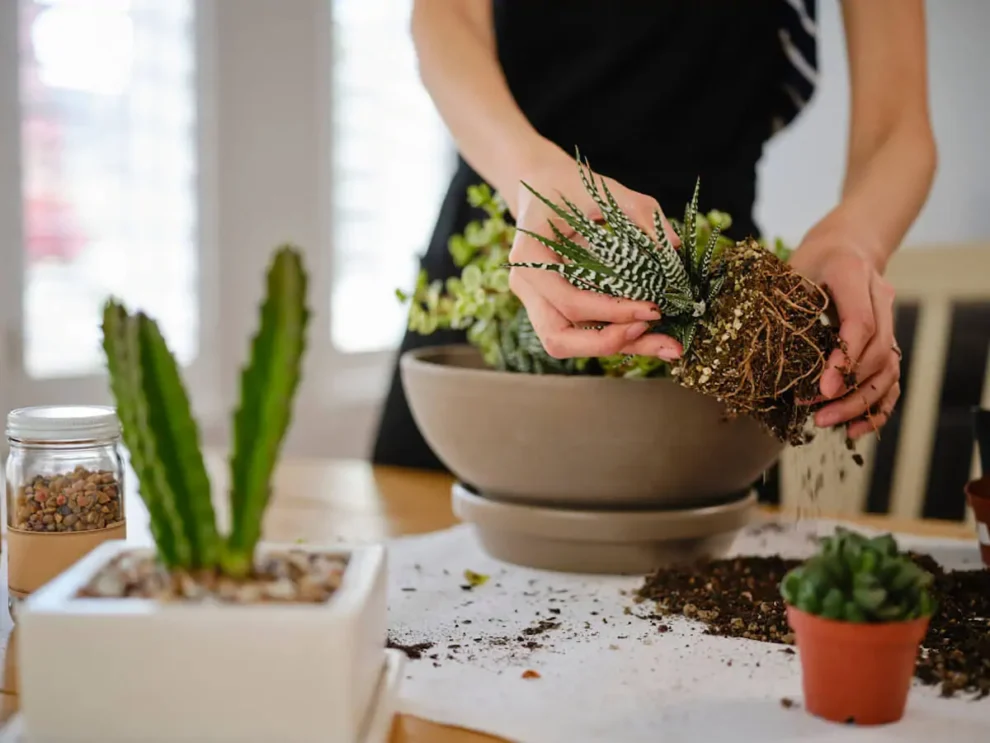Succulents are one of the most popular houseplants due to their exceptional beauty, low maintenance requirements, and ability to survive in a variety of climates. Their tough, fleshy leaves hold water, making them ideal for beginners and plant lovers alike. However, growing succulents indoors can sometimes be difficult, especially if you don’t know their special needs. In this guide, we cover everything you need to know about growing succulents indoors, from choosing the right plants to growing them year-round.
Table of Contents
Why Grow Succulents Indoors?
Succulents are not only visually appealing but also functional. Here are a few reasons why you should include them in your home garden:
- Aesthetic Appeal: Thanks to their unique shapes, colors, and textures, succulents can decorate any interior.
- Air Purification: Some succulents, such as aloe, are known for their air-purifying properties.
- Stress Relief: Gardening, even on a small scale, can decrease stress and enhance mental health
- Low Maintenance: Succulents demand less frequent watering, making them perfect for people with busy schedules.
Choosing the Right Succulents for Indoors
Not all succulents are suitable for indoor environments. Some thrive best with managed lighting and humidity levels. Here are some of the best options for indoor succulent gardening:
- Aloe Vera: Known for its medicinal properties, aloe vera is easy to grow and requires minimal maintenance.
- Jade Plant (Crassula ovata): A symbol of good fortune, the jade plant thrives in well-lit areas and adds a touch of luxury to your space.
- Echeveria: These rosette succulent plants come in various colors and are perfect for adding color to your home.
- Snake Plant (Sansevieria): Often called “beginner’s succulent,” this plant is nearly indestructible and can survive in low-light conditions.
- Zebra Plant (Haworthia): Compact and striped, the zebra plant is an excellent addition to offices and small spaces.
Step-by-Step Guide to Growing Succulents Indoors
1. Choosing the Right Pot
The health of your succulent is greatly influenced by the pot you select. What to look for is as follows:
- Drainage Holes: Pick pots with drainage holes because succulents don’t like to sit in water.
- Material: Terracotta pots allow for good ventilation and prevent overwatering, but ceramic or plastic pots also work as long as they have adequate drainage.
2. Selecting the Right Soil
Succulents need well-draining soil to prevent root rot.
- Specialized Soil: Choose a cactus or succulent potting mix available at any garden center.
- DIY Mix: Make your own mix by mixing two parts potting soil, one part sand, and one part perlite or pumice.
3. Providing Proper Lighting
Light is essential for succulent growth, but too much or too little light can be harmful.
- Bright, Indirect Light: Place your succulents near a south- or east-facing window where they will get at least six hours of bright, indirect sunlight each day.
- Artificial Lighting: Use grow lights made for succulents if there is a shortage of natural light. LED grow lights simulate natural sunlight and use less energy.
4. Watering Succulents Correctly
The main reason why succulents fail is overwatering.
- Water sparingly: Do not even water again until the soil is completely dry. Depending on the season, this could entail watering no more than once every two weeks.
- Bottom Watering: Submerge the pot in a tray of water and let the plant absorb moisture for fifteen minutes through the drainage holes. By doing this, overwatering is avoided.
5. Controlling Humidity and Temperature
Succulents prefer low humidity and warm temperatures.
- Ideal Temperature: Keep room temperature between 15 and 27 °C. Don’t place succulents near radiators or cold drafts.
- Humidity: Use a dehumidifier or place succulents in a naturally low-humidity area. B. Sunny windowsill.
6. Fertilizing Succulents
Succulents don’t need a lot of nutrients, but fertilizing them every now and then helps them grow.
- Frequency: Fertilize every 2-3 months during the growing season (spring to summer).
- Type: Use a balanced water-soluble fertilizer diluted to half strength.
Common Problems and How to Solve Them
1. Overwatering
Symptoms: Leaves turn yellow and mushy; growth is stunted.
Solution: Reduce watering and ensure proper drainage.
2. Underwatering
Symptoms: Leaves become shriveled or shrivelled.
Solution: Water thoroughly and allow the soil to absorb moisture.
3. Lack of Light
Symptoms: Stubby growth, faded color.
Solution: Move the plant closer to a light source or use grow lights.
4. Pests
Symptoms: white cottony spots (mealybugs), tiny webs (spider mites).
Solution: Use insecticidal soap or a cotton swab dipped in rubbing alcohol to manually remove pests.
Creative Ideas for Displaying Indoor Succulents
- Terrariums: In glass containers, create miniature succulent gardens.
- Hanging Planters: For a vertical display, use wall-mounted pots or macramé hangers.
- DIY Succulent Arrangements: For a gorgeous centerpiece, group different succulents in a single pot.
- Desk Decor: For a soothing effect, place tiny succulents on your desk, such as echeverias or zebra plants.
Seasonal Care Tips
Winter:
- As succulents go into dormancy, watering should be reduced.
- Ensure they get enough light, as daylight hours are shorter.
Summer:
- Avoid overwatering while slightly increasing the frequency of watering.
- To avoid leaf burns, shield succulents from bright, direct sunlight.
Benefits of Growing Succulents Indoors
- Improved Air Quality: Succulents help clean the air by removing toxins.
- Stress Reduction: Caring for plants can have a calming effect.
- Eco-Friendly Decor: Succulents are a sustainable alternative to plastic decor items.
- Natural Humidifiers: Some succulents release moisture into the air.
Conclusion
With the right knowledge and care, growing succulents indoors can be rewarding and easy. By choosing the right variety, providing enough light, watering sparingly, and using well-draining soil, you can enjoy a lush garden of succulents indoors. Whether you’re an experienced plant owner or just getting started, succulents offer endless opportunities to improve your living space while bringing a touch of nature indoors..
Start your succulent journey today and watch your indoor garden grow.
Let me know if you’d like to explore specific succulent varieties or unique display ideas further! 🌵




Add Comment